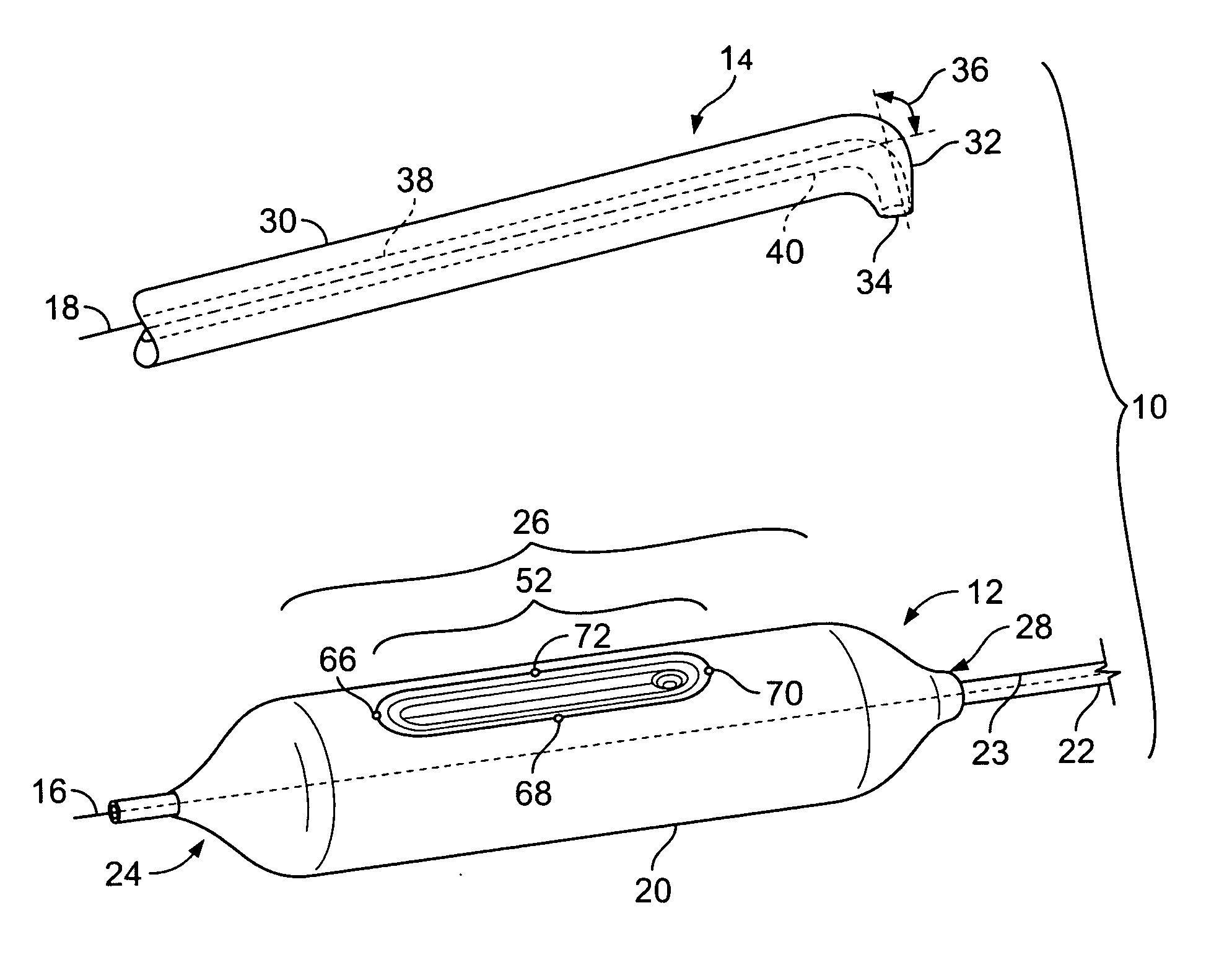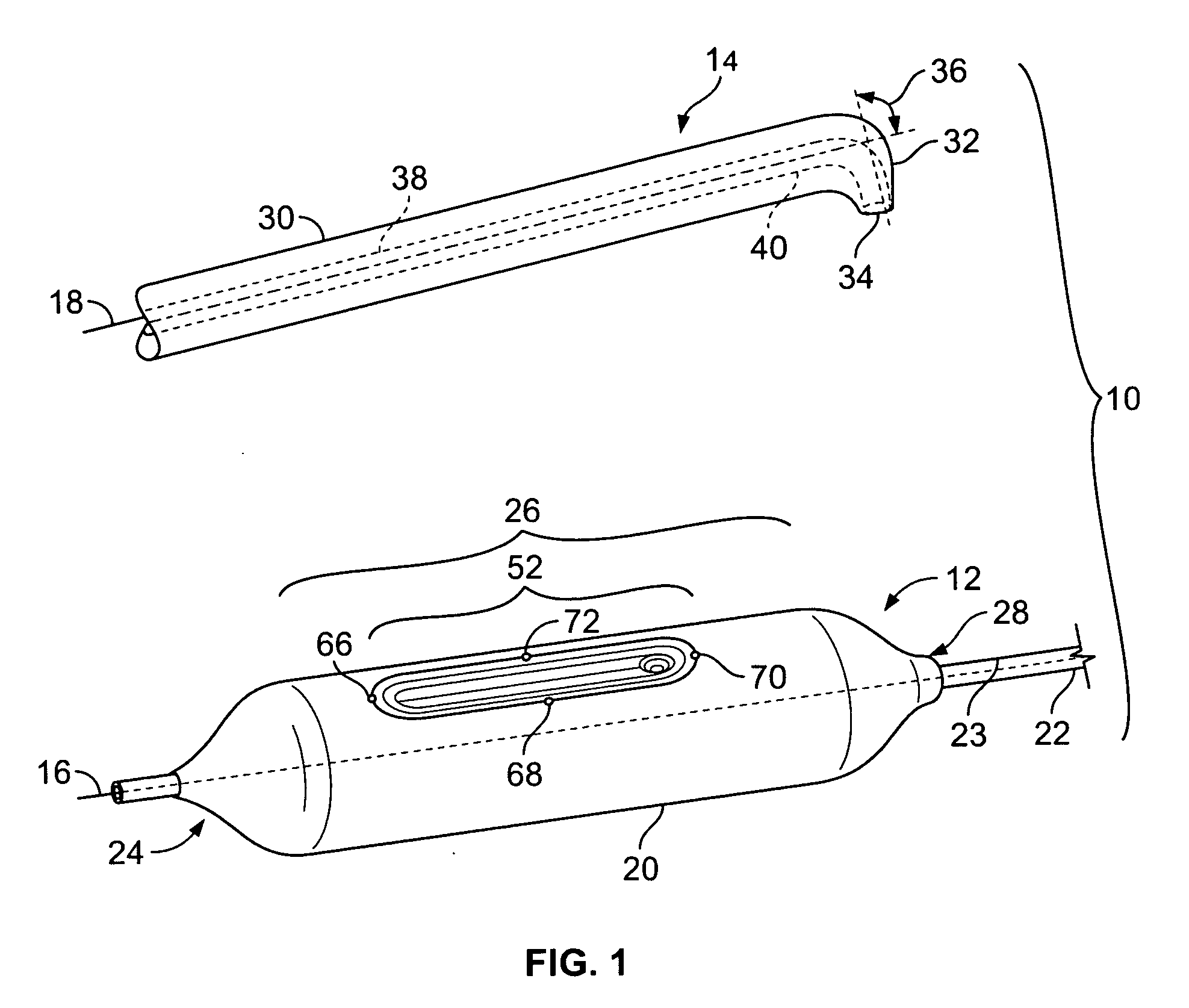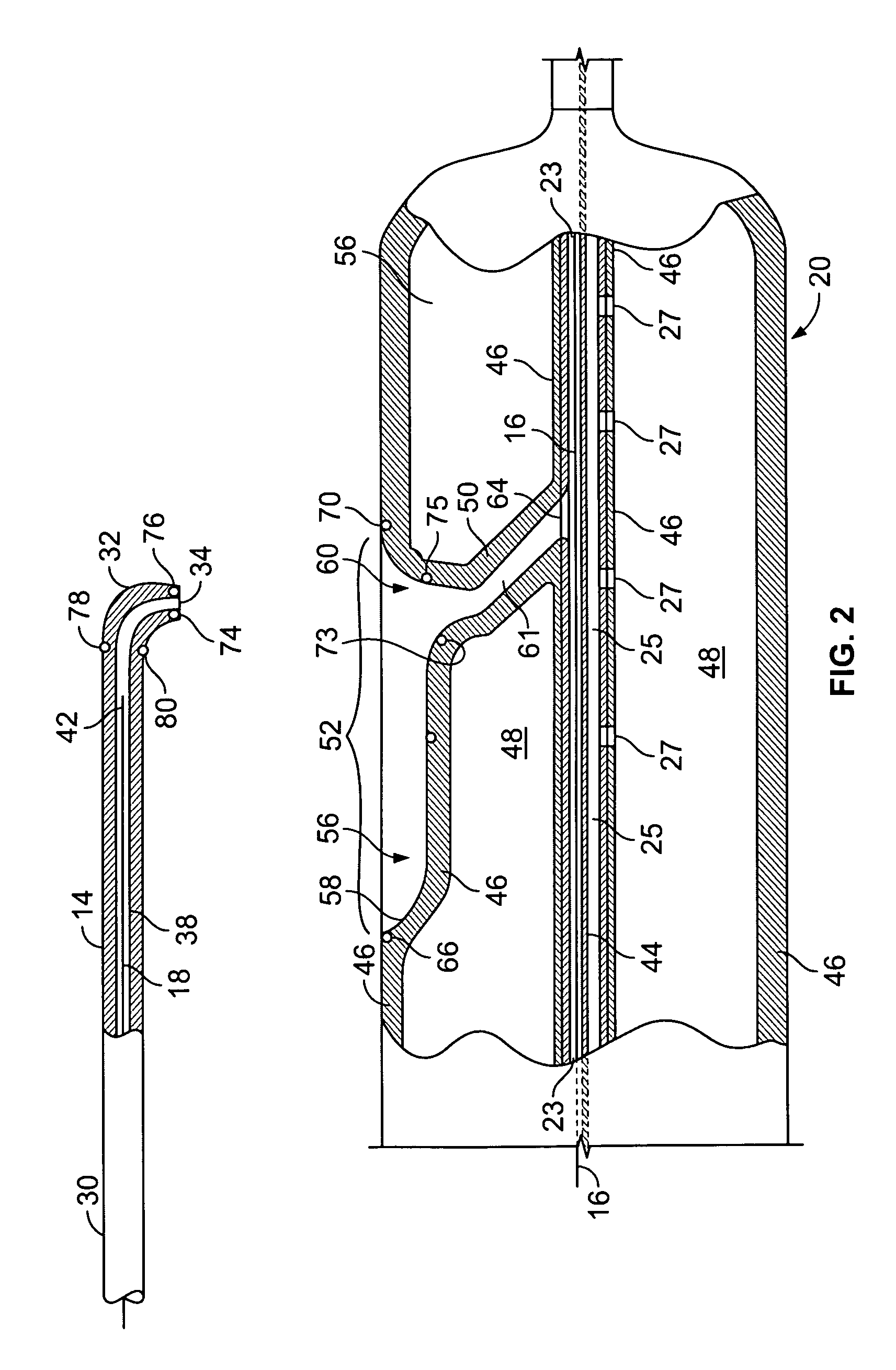System for treating chronic total occlusion caused by lower extremity arterial disease
a total occlusion, chronic disease technology, applied in the direction of catheters, surgery, other medical devices, etc., can solve the problems of increased risk of gangrene, heart attack, stroke and kidney disease, limited opportunity to treat the lower extremity pad,
- Summary
- Abstract
- Description
- Claims
- Application Information
AI Technical Summary
Benefits of technology
Problems solved by technology
Method used
Image
Examples
Embodiment Construction
[0034] For the purposes of the discussion below, “proximal” is defined as closer to the heart. Conversely, “distal” is defined as further from the heart. Additionally, the “downstream” direction in an artery is defined as the ordinary direction of blood flow (i.e., away from the heart) within the artery, whereas the “upstream” direction in an artery is defined as being opposite the “downstream” direction therein (i.e., toward the heart).
[0035]FIG. 1 is a perspective view of a system 10 for treating patients suffering from chronic total occlusion (hereinafter “CTO”) occurring in the lower extremities, in accordance with a first embodiment of the present invention. The system 10, which may be used in conjunction with the inventive methods described hereinbelow, includes a balloon assembly (also referred to herein as “capture catheter”) 12, an angled catheter 14, and first and second guide-wires 16, 18, respectively, both of which are of conventional construction. For purposes of clar...
PUM
 Login to View More
Login to View More Abstract
Description
Claims
Application Information
 Login to View More
Login to View More - R&D
- Intellectual Property
- Life Sciences
- Materials
- Tech Scout
- Unparalleled Data Quality
- Higher Quality Content
- 60% Fewer Hallucinations
Browse by: Latest US Patents, China's latest patents, Technical Efficacy Thesaurus, Application Domain, Technology Topic, Popular Technical Reports.
© 2025 PatSnap. All rights reserved.Legal|Privacy policy|Modern Slavery Act Transparency Statement|Sitemap|About US| Contact US: help@patsnap.com



